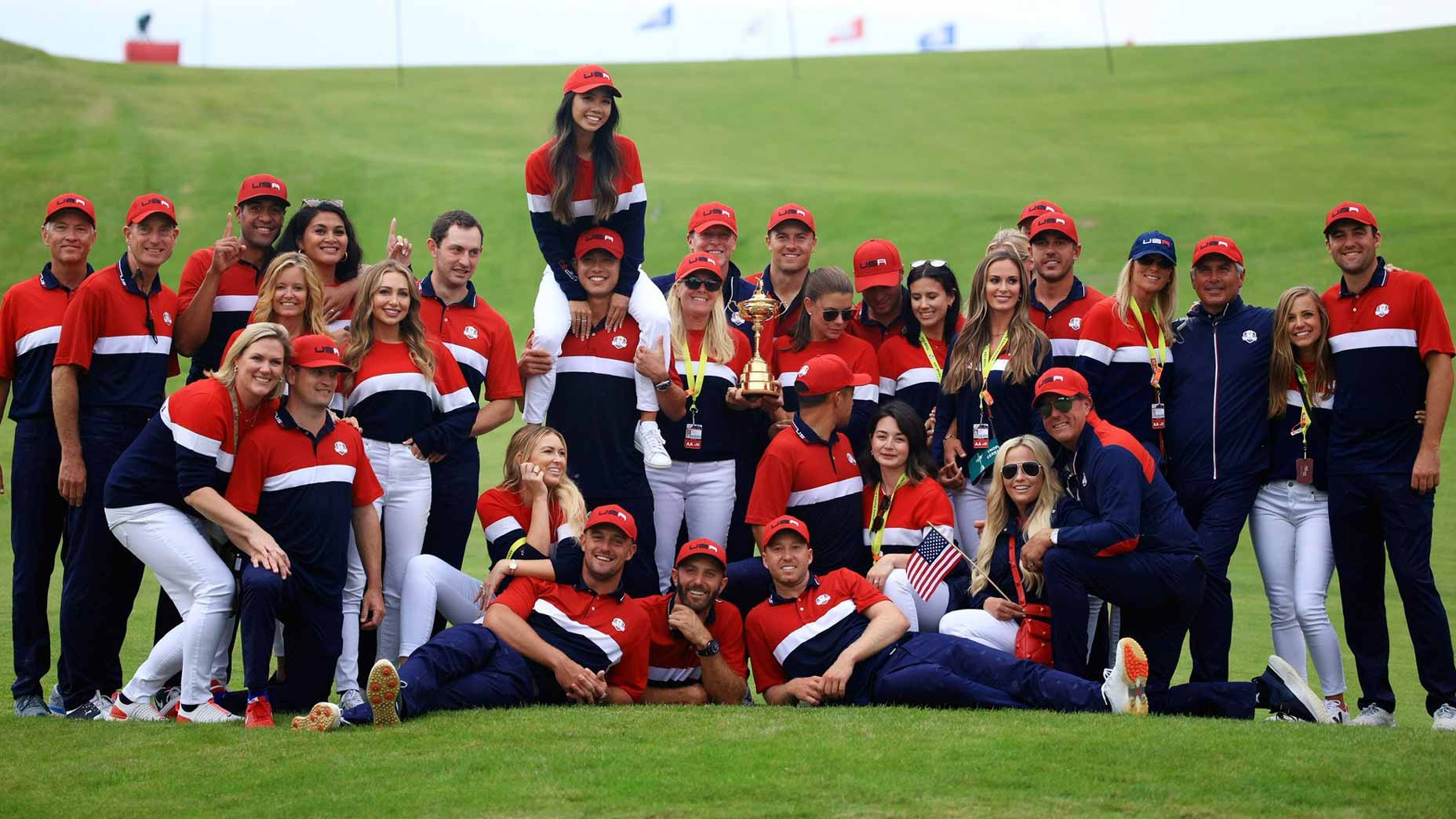In this first in a series of articles featuring profiles of some of the men and women serving as course raters for Golfweek’s Best, Golfweek architectural panelist, author and Auburn professor Jim Hansen chats with Linda Carrier of Pinehurst, North Carolina.
At 56 years old and a Type 1 diabetic with an insulin pump, she recently finished fifth in the grueling World Marathon Challenge, a race of 183 miles involving running an astounding seven marathons in seven days on all seven continents. A retired vice president of infrastructure and operations at a large Blue Cross Blue Shield plan on the West Coast, Carrier has rated 139 courses.
Golfweek’s Best utilizes more than 800 raters to develop its course rankings. Rating courses frequently on their own and sometimes at established events at courses around the world, these players share their thoughts on 10 rating categories ranging from memorability of par 3s to the shaping of features built into the ground. They then compile one comprehensive rating on a scale of 1 to 10 points for each course. The diversity of the rater network ensures that Golfweek’s Best course rankings do not become one-dimensional, instead catering to a wide variety of thought and skill level.
Golfweek’s Best course rater Linda Carrier, right, on a tee at Bandon Dunes Golf Resort with fellow rater Sue Hennessy (Courtesy of Linda Carrier)
Jim Hansen: Linda, when and how did you become a rater for Golfweek?
Linda Carrier: I, along with my husband, Eric, became a rater in 2018 after meeting and playing with another rater, David Madison. We had known David for many years, and after we moved from Seattle to North Carolina, we had many more opportunities to play golf with David and his wife, Carol. During these rounds, we would discuss the design of the courses, what we liked and didn’t like and which architects’ courses we tended to like to play more.
Hansen: Where did you grow up and what were the first courses that you ever played?
Carrier: I grew up in Columbus, Ohio, but never really played growing up. Many times I watched my dad and grandfather load their clubs into the trunk of the car and head out to the golf course, but I never tagged along or played. It was when Eric and I moved to Seattle when I first took up the game. I am a runner and would run with work friends every morning. One of these friends was also a golfer and we’d discuss the game on our runs. One day she told me that our company was having a golf tournament and asked if I’d like to play. I had swung many softball and baseball bats in my day but never a golf club, but I said “sure.” Eric came along, as I was using his clubs, and helped me decide which club to hit. On a par 3, closest-to-the-pin hole, I hit a shot and although it bounced off a tree, it came to rest very close to the pin and I won a small trophy. I was hooked! I played my first golf game at the age of 36.
Hansen: How would you describe your game and skill level?
Carrier: I consider myself an average or bogey golfer. One of the reasons golf is so much fun is each game I try to improve one thing, be it my putting or chipping. The other reason is the social piece: You meet so many great people on a golf course. My one and only strength is the ability to hit very straight drives 90 percent of the time. Eric says I’m a ringer in a 4-“man” scramble!
Hansen: What has been your greatest achievement as a golfer?
Carrier: We travel to Scotland, Ireland and England every year, except during the pandemic. My husband and I really enjoy links golf, the history of the game, the beautiful areas where some of these golf courses are built, and we feel there is no place better than the UK. Some of my greatest achievements include almost acing the ninth hole at Royal Lytham & St. Annes, becoming a Golfweek rater and becoming a member of North Berwick West Links, one of my absolute favorite courses in the world.
Hansen: Clearly, you are very passionate about playing golf.
Carrier: There are so many reasons one can be passionate about golf, but for me I have just a few. It’s a game that can be played as an individual or as a team. The more games I play, in all areas of the world, designed by different architects, built with varying grasses and approaches to golf course maintenance, makes it so very interesting and challenging. For example, I love links courses, as I’m a big fan of the bump-and-run approach to the greens. The challenges you have with the weather on links courses demands that you change how you play the game.
Hansen: Even more than with golf, it seems, your heart and soul and sense of self has been in your running. I have read that you took up running to stay healthy, is that right? You have been a Type 1 diabetic since the age of 14.
Carrier: That’s true. I am one that likes to challenge myself and see what I can do.
Hansen: Your career as a long-distance runner is simply astounding.
Carrier: I have completed 66 marathons and 55 half-marathons to date. One of my goals is to run a marathon in all 50 states. I have 29 states done. I have also completed the World Marathon “Majors,” where you must run Boston, Chicago, New York, London, Berlin and Tokyo marathons. Completing the Majors is difficult, as you need to qualify – run fast! – and/or be picked in a lottery. I completed them in 2015.
Hansen: As incredible as all that is, your tackling the World Marathon Challenge, not just once but twice, once in 2019 and the other in 2020, blows my mind. How could you manage that?
Carrier: This is a race where you run seven marathons on seven continents in seven days. In 2019 we started in Antarctica then ran in Cape Town, South Africa, followed by Perth, Australia, on to Dubai in the UAE, Madrid, Spain, Santiago, Chile and finishing in Miami. In 2020 the weather was so bad in Antarctica, we had to start in Cape Town, then go to Antarctica and on to Perth and so on. Instead of Santiago, Chile, we ran in Fortaleza, Brazil, and again finished in Miami. Santiago was having some unrest and the race organizer felt it was unsafe to run here.
Hansen: How do you get from one continent to another so fast that you can run again the very next day?
Carrier: In a nutshell, you board a charter plane and as soon as you land, you run the marathon. As soon as the last person finishes, you head back onto the plane and fly to the next continent. We ate, slept and stretched on the plane. There was about 36 of us crazy runners doing this event. No question but it is very difficult just to run back-to-back marathons, but then add to it crossing multiple time zones and running in extreme heat and extreme cold.

Golfweek’s Best course rater Linda Carrier pauses next to a ghost tree at Bandon Dunes Golf Resort’s new Sheep Ranch. (Courtesy of Linda Carrier)
Hansen: Playing golf for three or four straight days at a Golfweek event has to be a piece of cake for you. For many of the rest of us, we have a hard enough time physically and emotionally accomplishing that.
Carrier: Being a rater has been a blessing. I’ve been one since 2018 and have so far rated 139 courses. I typically travel and play golf with my husband and often with another rater couple. What I find very valuable is that, as a woman, I see things a little differently. I’m an average female golfer, and I’ve played some courses where there were many holes that had some very long carries. I don’t mind one or two, but if you have 50 percent where most women would not be able to clear the rough, it doesn’t make for a fun day.
I also see how some courses do not put a lot of time or thought into the women playing their course. Tee boxes are difficult to find or are not mowed, or tee markers are pointing into the trees, or the tree management was neglected from the forward tees. Also, as a woman, I am not a long-ball hitter so my landing zones are different than the men.
Hansen: I often ask raters to identify their weaknesses as raters. What might be some of your own weaknesses?
Carrier: One of my weaknesses is not fully understanding the big picture of designing a course, maintaining it, keeping costs manageable and being able to adjust the course to the changing clientele over time. On a side note, I have recently just taken a part-time job working at the Country Club of North Carolina as a golf course “maintenance technician.” I want to better understand what it takes to keep a golf course well maintained and beautiful.









